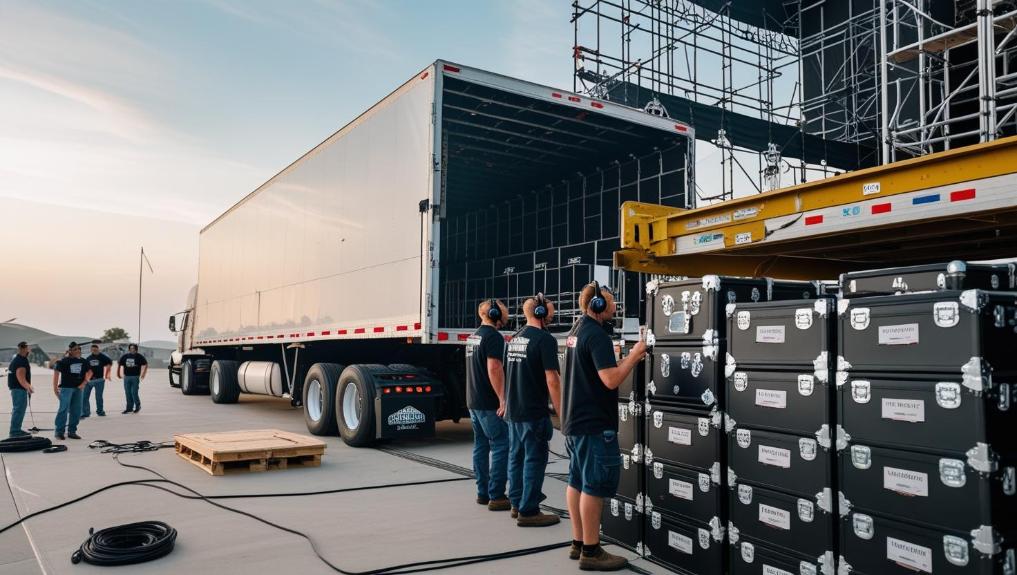7 Ways Trucking Keeps the Music Industry on the Road

The thrill of a live show seldom begins where fans expect. Long before the first chord hits, a convoy of trucks has swiftly traversed highways and back roads, establishing the foundation.
Those hulking rigs carry everything from speaker cabinets to souvenir T-shirts, yet they tend to fade into the background once the house lights dim.
Reliable transport gives artists a lifeline to audiences scattered hundreds of miles apart. A look beneath the glitter reveals trucking as the quiet heartbeat of the whole ritual.
1. Heavy Equipment Moving Between Venues
Pylons, speakers, LED walls, and miles of cable never sprout wings of their own. Specialized freight companies shepherd this gear across asphalt, loading it at dawn and unloading it long after the crowd has gone.
Experienced drivers construct nightly routes that align with a military schedule, ensuring that stadiums and arenas are completed on time.
2. Recording Studios on Wheels
Crews no longer wait for inspiration to book time in marble-paneled control rooms. Trucks packed with mixing desks, interface racks, and hurricane-proof consoles enable artists to press record three blocks or three states from the last gig.
Only drivers accustomed to babying sensitive audio gear pull those leviathans, lulled by the steady hum of equipment trays sliding into place.
3. Delivering Instruments and Backline Gear
Vintage pianos, custom drum kits, and a handful of one-off pedals often wait in a single loading bay.
Secure, climate-controlled trucks move each piece because anything less would risk the irreplaceable mix of sound and feel that seasoned musicians depend on.
4. Keeping Festival Logistics Flowing
A weekend festival demands a town that springs up and vanishes overnight.
Trucks carry stages, barricades, and portable generators up dirt roads no artist ever sees, and without that machinery the whole endeavor collapses before the first act even sound-checks.
ALSO READ: 11 Epic Songs to Blast Before Your First Skydive in New Gear
5. Powering Merchandising Operations
That tour-only T-shirt or colored-vinyl record popped off a delivery truck hours before doors opened.
Swift trucking distributes merchandise to venue stores, street booths, and late-night pop-ups, letting fans snag new gear the very night they catch the music.
6. Facilitating International Tours
When a band crosses an ocean, cross-border trucking fills the gap between an airport tarmac and a distant arena stage.
Same-day road carriers in North America or regional hauliers bouncing across Europe keep gear in motion, so the show feels seamless no matter how many borders blur overnight.
7. Providing Housing for Crew on the Move
Modern touring bands seldom pause long enough to unpack, let alone find a decent room.
Several freight carriers now outfit their rigs with sleeper cabins so sound and lighting technicians can steal private hours of sleep between cities.
That small luxury curbs exhaustion and keeps backstage nerves in check.
Conclusion
Photogenic artists bask in the glare, yet it is the long-haul truck drivers who really drive the tour forward.
Highway by highway, they carry more than gear; they ferry the moment when music picks up a crowd.
As arenas shrink and festivals sprout, trucking remains the quiet compass guiding rhythm and gear from one stage to the next.
